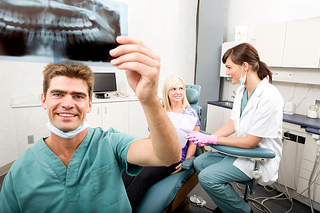What is orthognathic surgery?
November 4th, 2020

Orthognathic surgery is surgery to correct a wide variety of abnormalities of our patients' jaw and teeth. The surgery is often done in conjunction with orthodontic treatment. While the patient’s appearance may be significantly improved as a result, the primary purpose of the surgery is to correct functional problems including but not limited to:
- Unbalanced facial appearance
- Protruding jaw
- Open bite (upper and lower teeth don’t overlap properly
- Excessive wearing down of the teeth
- Difficulty with chewing or biting
- Chronic mouth breathing
- Sleeping problems such as sleep apnea
- TMJ pain (jaw joint pain)
- Restoring facial injuries
Knowing when to start the orthodontic treatment in preparation for orthognathic surgery can also be tricky if our team at Premier Orthodontics is treating a teenager. It is important to know when to get started. If orthodontic treatment is initiated too soon and the teenager is still growing, the patient will either need to hold in braces until his or her growth is complete and they are ready for surgery or the braces will have to be removed and then placed again when growth is complete. Neither of these options is attractive since it requires longer time in treatment, which is something all our patients want to avoid. Our team at Premier Orthodontics strives to get all patients finished with treatment as quickly as possible because it is healthier for the teeth and gums and gives them a beautiful smile to enjoy for a lifetime.
If you are considering orthognathic surgery or you have been told that you need jaw surgery, give us a call to schedule your initial consultation today. Dr. Syrah Quraishi and our team at Premier Orthodontics will explain our treatment plan in a way you will understand and we will keep you informed every step of the way.



 Website Powered by Sesame 24-7™
Website Powered by Sesame 24-7™